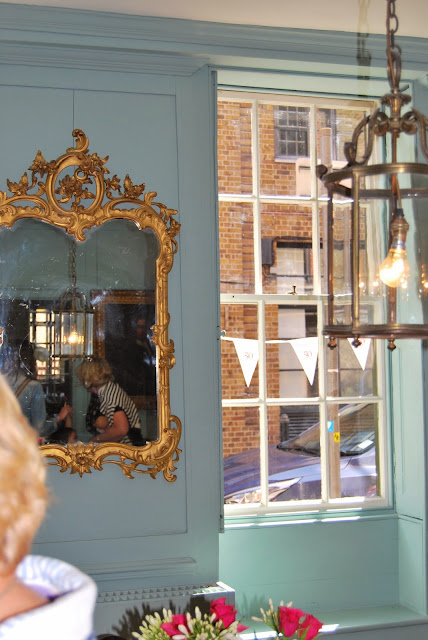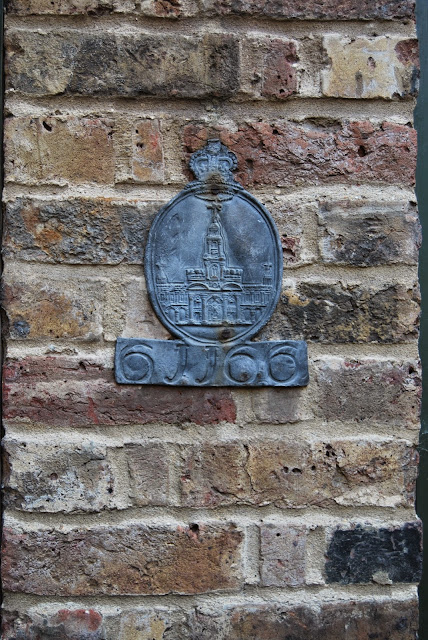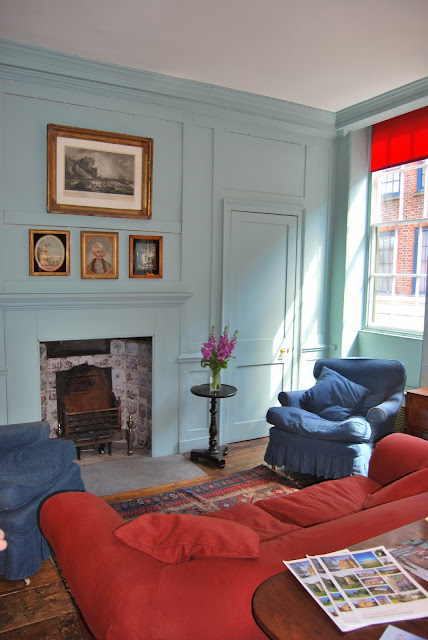The area in London called Spitalfields is full of architectural charm from the dazzling Hawksmoor's Christ Church to the buzzing market where you can pick up hand-made curiosities. Nearby in the surrounding streets early brick terraces from the 1700s tell us stories of silk weavers and the original emigres.
This weekend Landmark Trust gave the public a chance to see inside some of their restored properties. As part of their 50th anniversary they opened 25 of their 200 buildings across England, Scotland and Wales. Many had never been opened before or are done so only rarely. The 25 properties chosen had been carefully picked so that 95% of the British population would be within 50 miles of one.
Founded almost 50 years ago by philanthropist John Smith and his wife Christian, the Landmark Trust was set up to try and prevent the loss of smaller historic buildings that the National Trust and the Ministry of Works could not restore.
From the first the Landmark Trust had two goals: saving places and promoting public enjoyment of historic buildings. A descendant of the great 19th-century travel pioneer Thomas Cook, the founder John Smith conceived a simple but original model to enable ordinary people to experience living in extraordinary buildings for short periods of time, the holiday let.
Over time the number of amazing properties they have restored has continued to grow. From a Gothic Temple, a
Pineapple Pavilion, a
House of Correction and a
Pigsty to the 23 buildings on Lundy island, with its fragile eco-system in the Bristol Channel.
 |
|
 |
|
The property that was opened for those within reach of London was in Princelet Street, Spitalfields.
The street had originally been home to the thrifty and hard working Huguenots, a Protestant religious denomination that had suffered persecution in France in the eighteenth century. They brought with them skills in clock and jewellery making, silver smithing and silk weaving.
The weavers used hand-looms to weave raw silk imported from Italy and brought with them a newly invented technique to give thin silk taffeta its glossy lustre. The Huguenot weavers found inspiration for their designs from insects and flowers, and were fond of hanging window boxes outside their houses and training singing birds.
Princelet Street is available to book as are all of the other restored properties of Landmark Trust.
The Landmark is also still involved in new restoration projects and their latest appeal relates to a rare medieval building in the Brecon Beacons region of South Wales.
Once part of the Llanthony Priory estate,
Llwyn Celyn is thought to have been built in the late 15th century, at a time when Wales was recovering from the devastation left after Owen Glyn Dwr’s unsuccessful revolt against English rule.
Built as a grand 3-bay hall, it retains its late medieval floorplan, with cross passage, service rooms, central hall and solar wing. Later in the 17th-century, a first floor was inserted into the hall, together with a staircase and chimney flue that still remain.
Over the centuries the status of Llwyn Celyn gradually diminished, with further modernisation grinding to a halt. Finally, in recent times it has been left to decay and without Landmark Trust's help will be lost to history.
As a charity Landmark Trust requires donations to raise the funds required to restore properties like this. When successful they become amazing places to stay in or even visit for the day as was the case, this weekend.

















